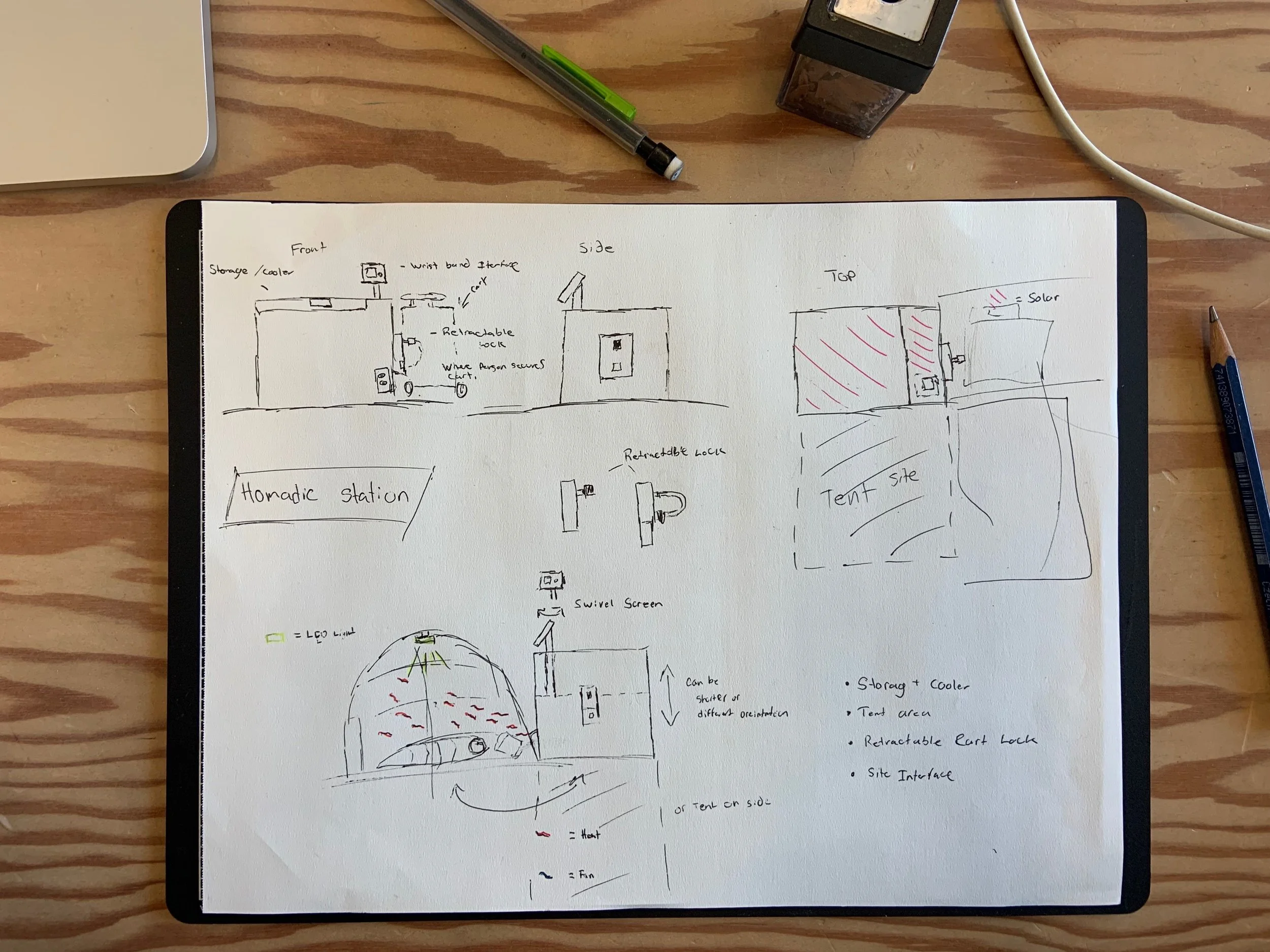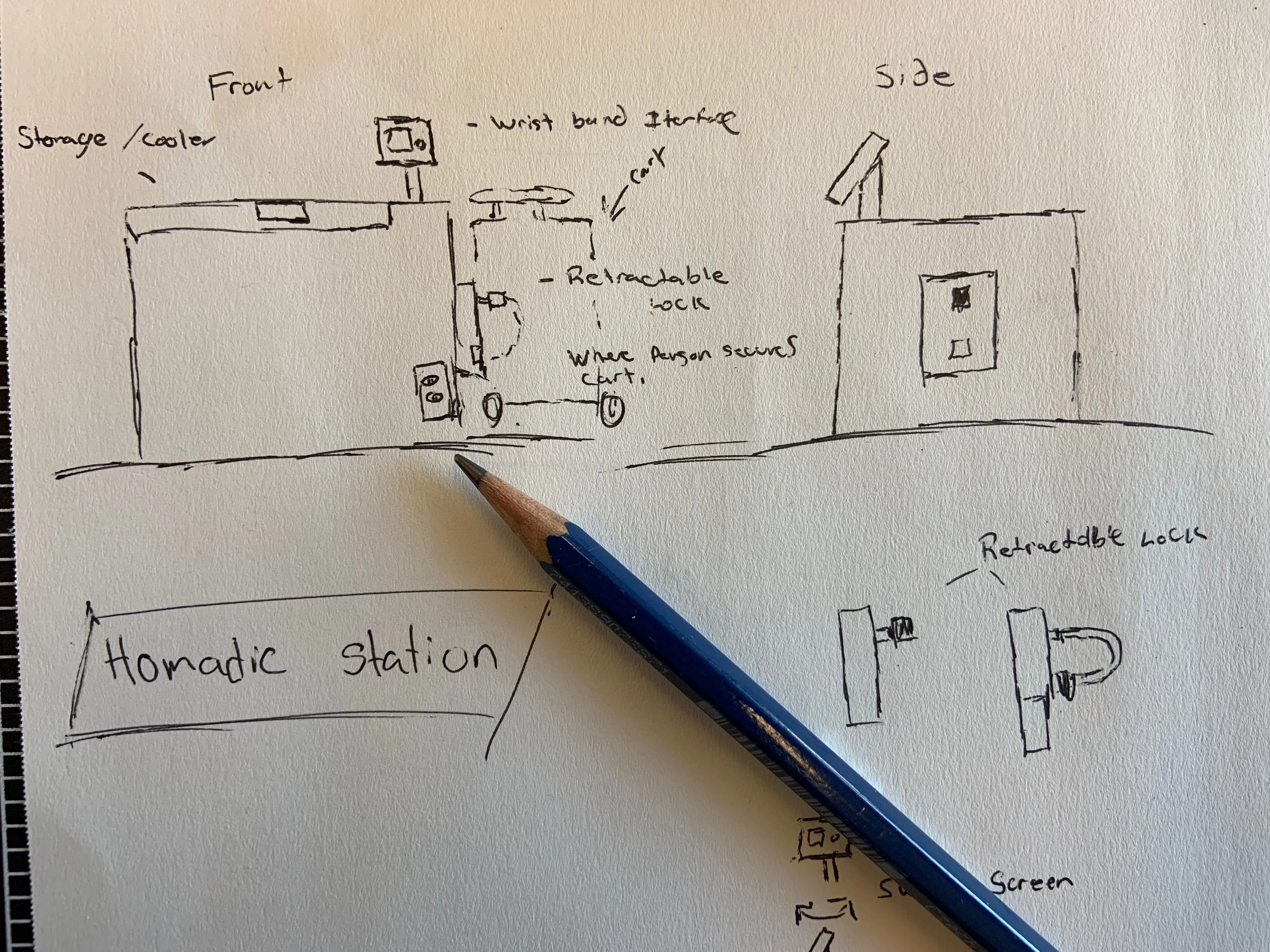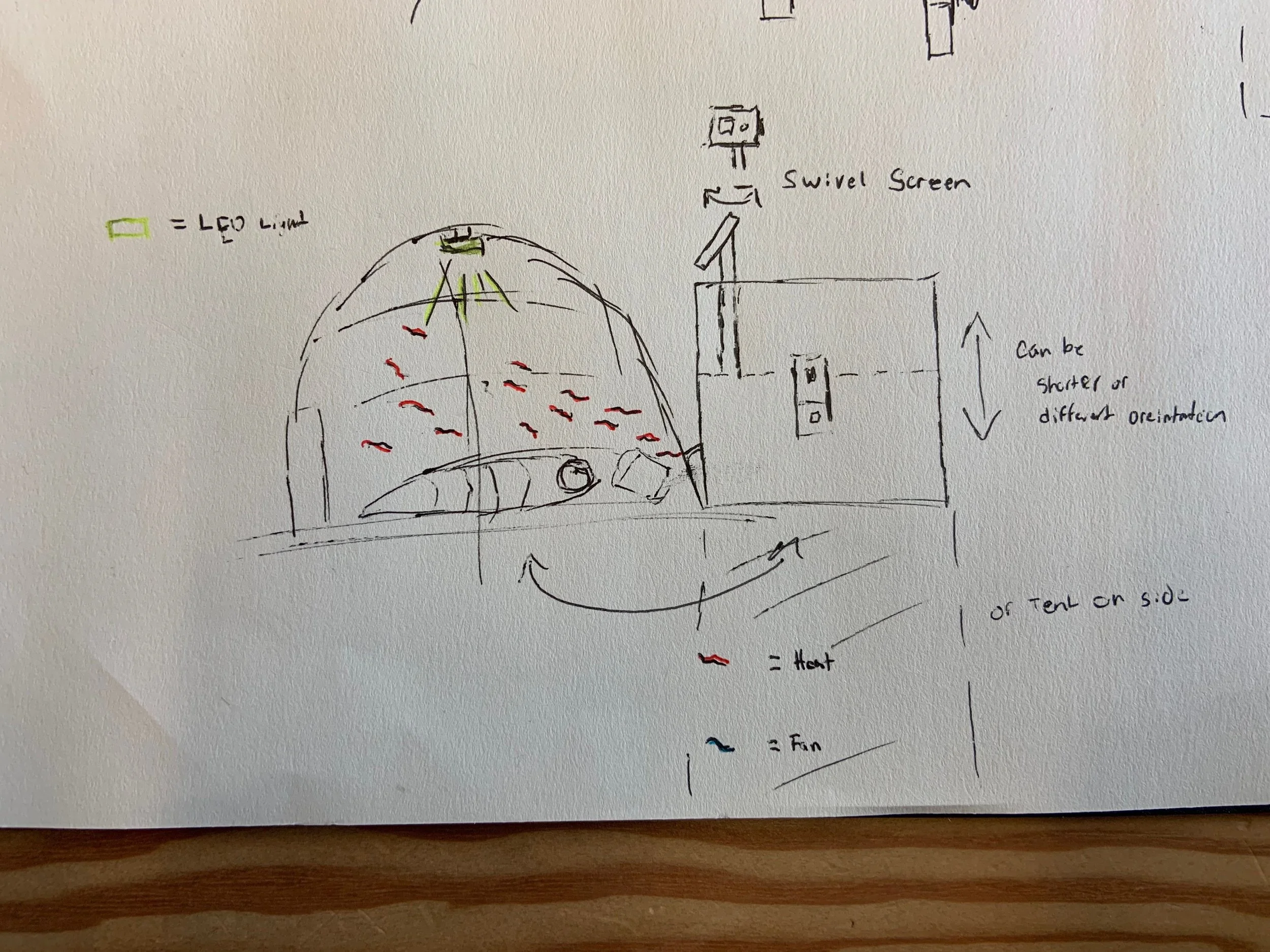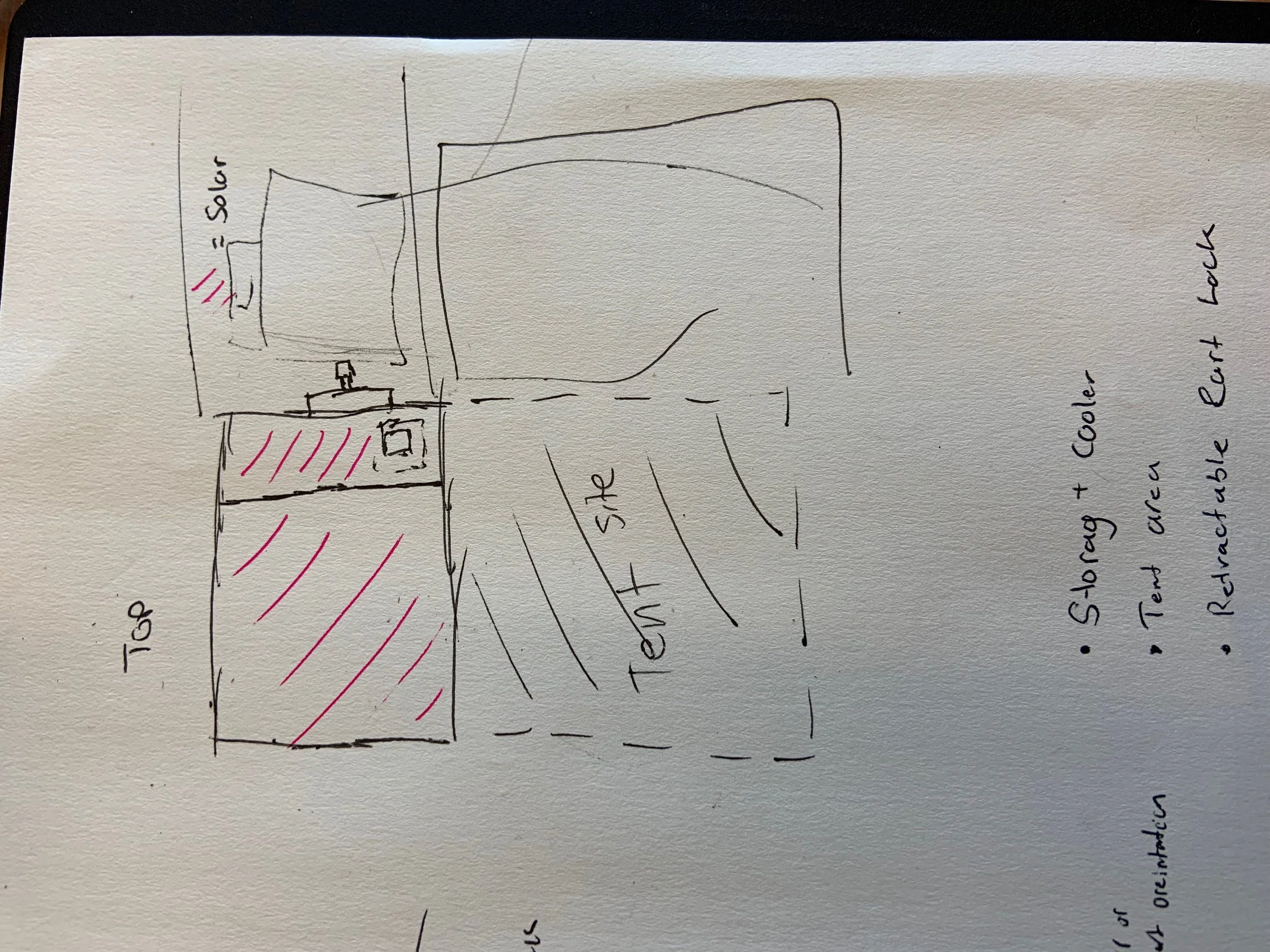The Homad System
An alternative Modular Housing system for
Homeless Students
Features:
The Pod
The Wristband
The Kiosk
The Locker System
The Challenge:
How might we provide temporary housing for homeless students who are on the waitlist for housing assistance?
Client:
Combined class project for IxD Studio, Project Management, & Product Design
Timeline:
10 Weeks
THE TEAM
Shadae Kawaguchi
Landon Harris
Emily Hedrick
Roy Allen
My Role:
The Kiosk
Design Research
Interaction Design
Product Design
UI
Process
The BRIEF
As a class we brainstormed different problems that occur in the world, and tried to find patterns to sort them into categories. We were assigned groups based on which issue resonated with us the most, our group gravitated toward the issue of homelessness. The brief was to pick a solution within the areas of Tech, Society, and Media. From tech, we decided to choose Modular Housing. Within society, we picked a traveling lifestyle, and from Media, we chose Maslow’s Hierarchy of needs. We landed on trying to create a portable housing system for the nomadic lifestyle.
Being from LA, homelessness has always been a prevalent issue that not many are willing to address and is only magnifying in recent years. After the first decrease in the homeless population in years in 2018, the rate spiked 12% over the last year.
Ideation
At this point our users were the general homeless population, so we brainstormed a convertible modular house that catered to a nomadic lifestyle, the system included:
The Cart:
Would have plenty of storage for holding belongings and folds out into a tent to provide shelter from the elements.
The Wristband:
A secure way to hold currency and pay for necessities at participating retailers.
The Sleep Station:
A place to park the carts and hook up to amenities (heating & ac) to provide some comfort, and would have extra storage.
Sketches
Paper Prototypes
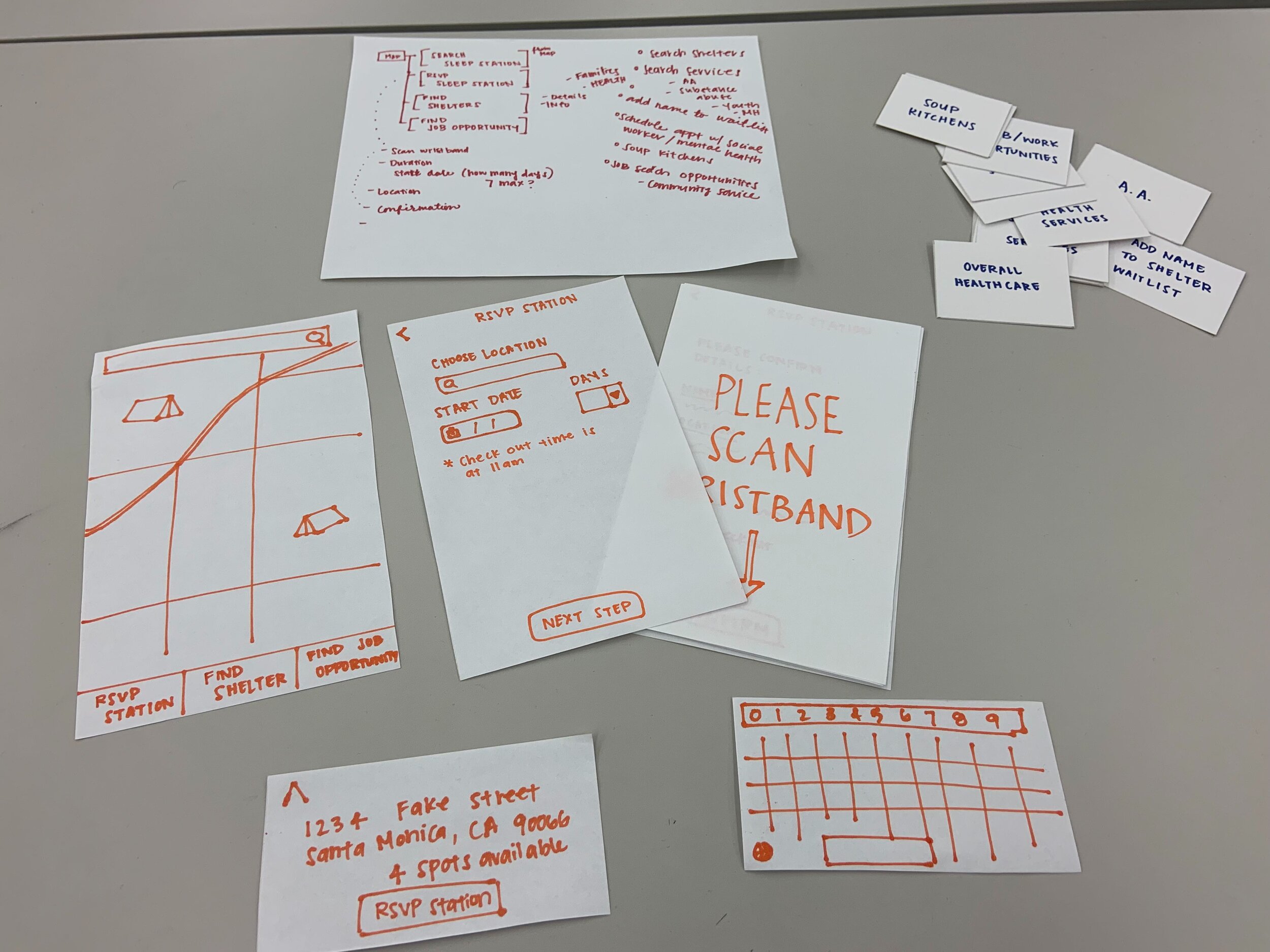
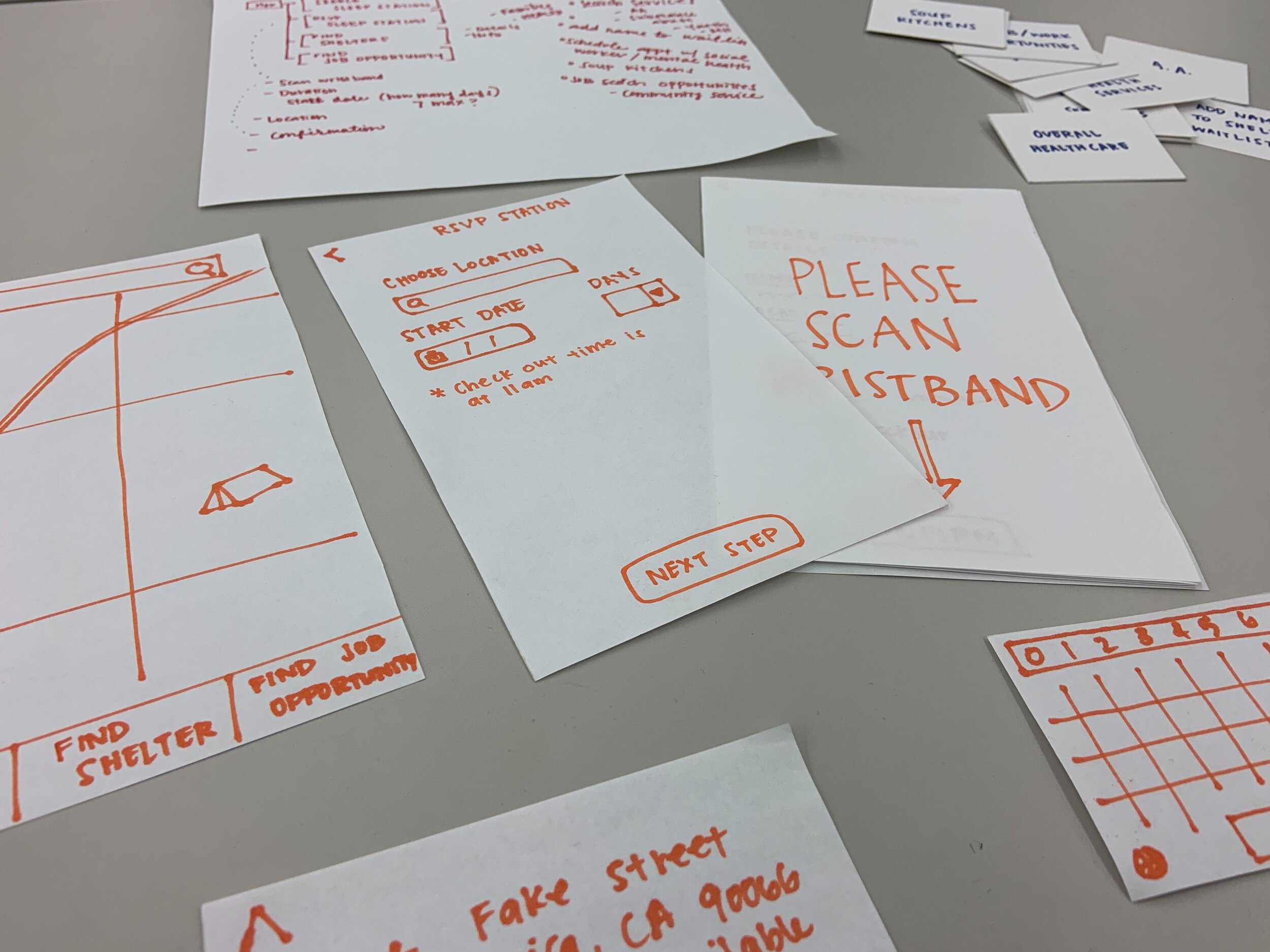

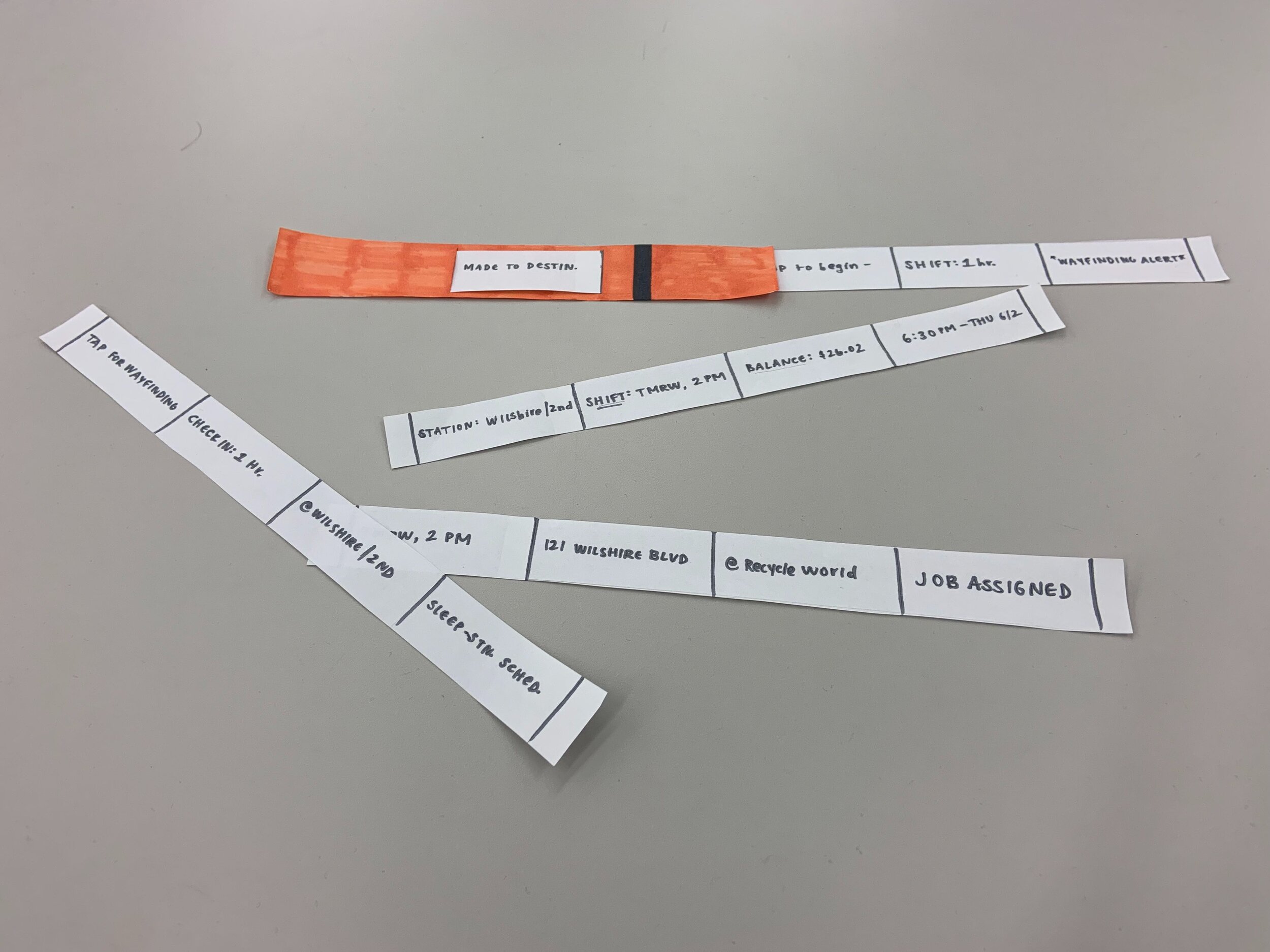


Renders of early iterations of
the cart
the sleep station
the kiosk
and the wristband
Research
Through our secondary research we discovered:
L.A. County Department of Public Social Services (DPSS) research estimates about 10% of a school’s student population experiences homelessness.
There are approximately 30,000 students at SMC.
Read more about it here.
We decided to find out what resources were available at Santa Monica College, and get in touch with people in charge of the departments that would aid students in need.
We started by going to the wellness and wellbeing center where we were greeted by Martha, who is the first point of contact for students seeking assistance. Through our conversation with Martha we learned about all the resources available to students which includes:
food vouchers
access to food pantries on campus
students can speak with psychologists and social workers
free access to the the health center and gym facilities to shower
One of our biggest insights from talking to Martha was that homeless students want to stay confidential and covert, and rarely do they ever seek help voluntarily.
We also met with Susan Fila, the Director of Health and Wellbeing:
Students are encouraged to reach out to a friend before going to the shelter system
The application/waitlist process is very complex can take months-years
Students have to be “legitimately” homeless for approximately 150 consecutive days
SMC offers many resources but no easy way to tie them together, or make them discoverable
The parking lot or near the police station would be the best areas to house system for safety of students
Finally, we met with Ferris Kawar, the Head of Environmental & Urban Studies on Sustainability. Our insights were:
The materials we choose to make the system out of should be Durable, Cleanable, & Reusable
The wristband components could have TAP + Metro capabilities
We could include reusable water bottles
Field observations





We walked around SMC’s campus to see where the best locations would be for the system
Landon: The Pod
Roy & Landon:
The Locker System
Emily: The WristbanD
My Role: The Kiosk
Hi-Fi Prototype of The Kiosk
User Testing at SMC
reflection
We gained great insights from domain experts on campus, although we ran into obstacles gaining access to our target Users. But, we understand the need to keep their information private. In the future, we would love the opportunity to test our concept on students in need to discover if this is a solution that meets their needs and how it can be improved.












